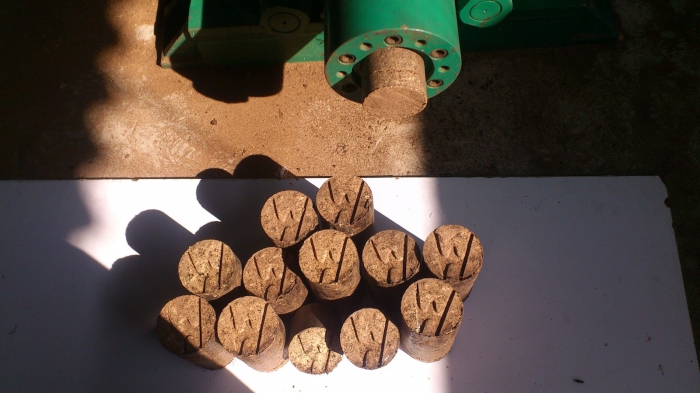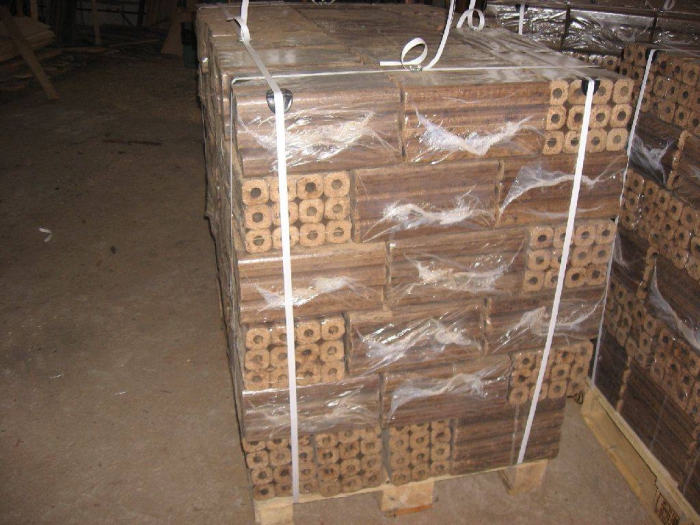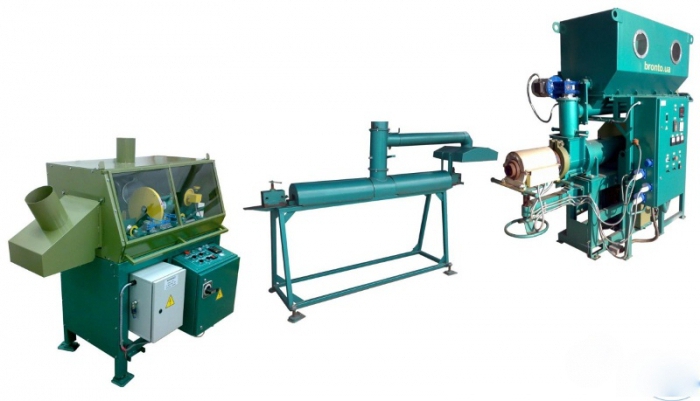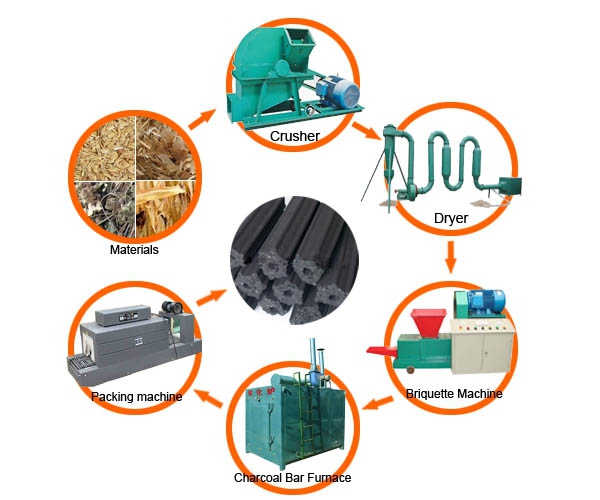The production of fuel briquettes is a very popular topic among experienced entrepreneurs as well as people without experience in organizing their own business. But any business has its pitfalls. For example, they can be encountered when choosing equipment for the production of fuel briquettes. However, before moving on to the topic of acquiring machines, let us consider what such a business is.

Features of fuel briquettes
Briquetting is the process of pressing a material under high pressure when heated. With increasing temperature of the raw materials, binding resinous substances are released from it, due to them, particles are bonded and the briquette is further formed. As a result, a dense and environmentally friendly fuel is obtained, which surpasses ordinary firewood in calorific value.
The main advantage of briquettes is a constant combustion temperature for four hours. It turns out that in comparison with firewood, this type of fuel can be laid in the stove three times less. Burning occurs with a minimum amount of smoke, in addition, there is no sparking.
The low cost of the production process is another important advantage of this type of fuel. This is due to the fact that most often for the production of briquettes use waste (sawdust, shavings), which are provided to reduce the cost of disposal on a free basis.

On the production of fuel briquettes
An extruder for the production of fuel briquettes is capable of producing 185 tons of products per month. When implementing this business, investments will be required that will be used to purchase equipment, pay staff, rent industrial and warehouse premises, and organize an office.
As raw materials, you can use sawdust, shavings, flax bonfire, buckwheat husks, sunflowers, non-feed waste elevators, straw, peat mass. Consider the benefits of this production:
- low cost of raw materials (often it has a negative cost);
- low investment in an industrial enterprise;
- profitability can reach sixty percent;
- quick payback.
Who benefits from this business?
It is profitable to produce fuel briquettes:
1. Agricultural processors and elevator owners.
2. To farmers who grow rye, barley, wheat, sunflower, buckwheat, flax and other crops.
3. Livestock farmers raising cattle, pigs, poultry.
4. Forest managers, timber processing enterprises.
5. Power engineers and the municipality (briquetted fuel can be used for heating boiler houses of medium power).

Equipment for the production of fuel briquettes
The line designed for the manufacture of this type of fuel consists of the following mechanisms: a calibrator, a drying complex, a screw conveyor, an extruder press, ventilation, and a control panel. The productivity of such a plant will be 150-200 kg per hour with a power consumption of 22.5 kW. The line for the production of fuel briquettes has the following overall dimensions - 8x3, 5x2.8 meters. The weight of the installation is 1654 kg.

Calibrator and screw conveyor
This equipment is designed for screening sawdust and controlled feeding of prepared raw materials by means of a screw conveyor to the receiver of the drying complex.Specifications: voltage - 380 V, productivity is 1.5-10 cubic meters per hour, installation power - 0.74 kW (calibrator) and 0.37 kW (conveyor), dimensions - 2.6x1.56x1.34 / 2 , 63x0.46x0.66 meters, weight - 215/90 kg. Sawdust fractions up to 5 mm are used as raw materials.
Drying complex
This equipment for the production of fuel briquettes is designed to remove moisture from pre-crushed raw materials by mixing it with streams of hot air. The drying complex consists of a receiver, a metal frame of a heat generator, air ducts with expanders, a cyclone and a fan.
A temperature sensor is used to control the temperature. Grids and bricks for the combustion chamber of the generator are not included in the package, they will have to be purchased separately. Technical characteristics of the installation: productivity is 100-300 kg / h, voltage - 380 V, power consumption - 2.2 kW, weight - 500 kg.
Briquette press and hood
This equipment is designed for briquetting biological raw materials, the moisture content of which is 8-12 percent, fraction up to 5 mm. The press is equipped with a cutting knife for dividing the finished product, regulation of the screw speed, temperature control system. The hood consists of an umbrella, ducts, metal duct, fan.
It is designed to remove emitted gases during installation operation. The dimensions of the ducts are individual, they are attached directly to a specific industrial facility. Specifications: productivity - 150-200 kg / h, engine power is 15 kW, overall dimensions - 2.21x0.66x1.32 meters, weight - 725 kg.

Equipment selection
Consider what factors you should pay attention to when buying a machine for the production of fuel briquettes. Such a parameter as price is not decisive - you should not look where it is cheaper. In order to make the right choice, you need to carefully study the technology and delve into all the intricacies of this production.
For example, if you are offered two units with the same performance, but they will differ in price, it is worthwhile to find out other characteristics of the equipment. They may differ in parameters such as utilization and operating costs. Usually, a more expensive model will have significantly lower costs than a cheap one.
This may be a smaller number of maintenance personnel, consumables, in addition, it may be more reliable in operation, able to function continuously, for days, the load factor will be 0.9. A cheaper model will have the opposite. Therefore, you should deal with all the technical characteristics of the equipment offered to you and calculate the feasibility of acquiring a particular line.
